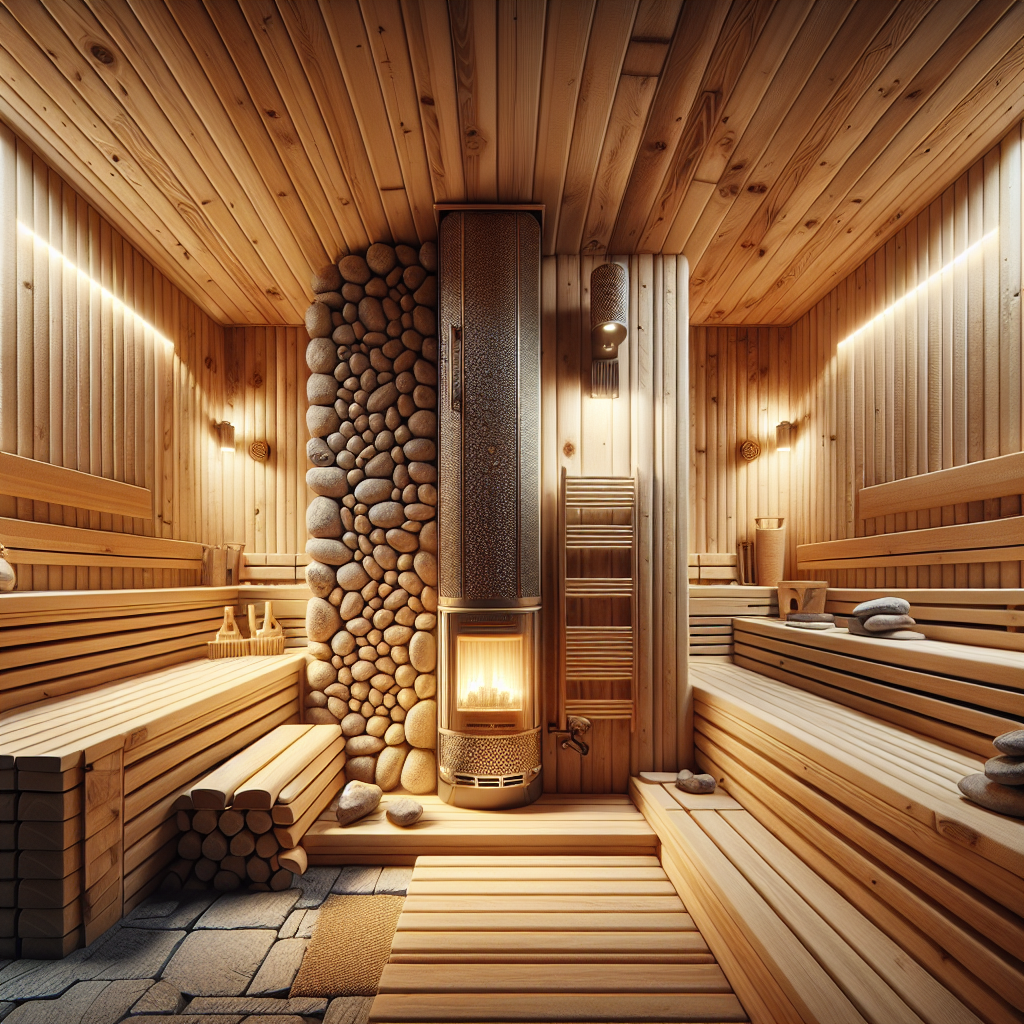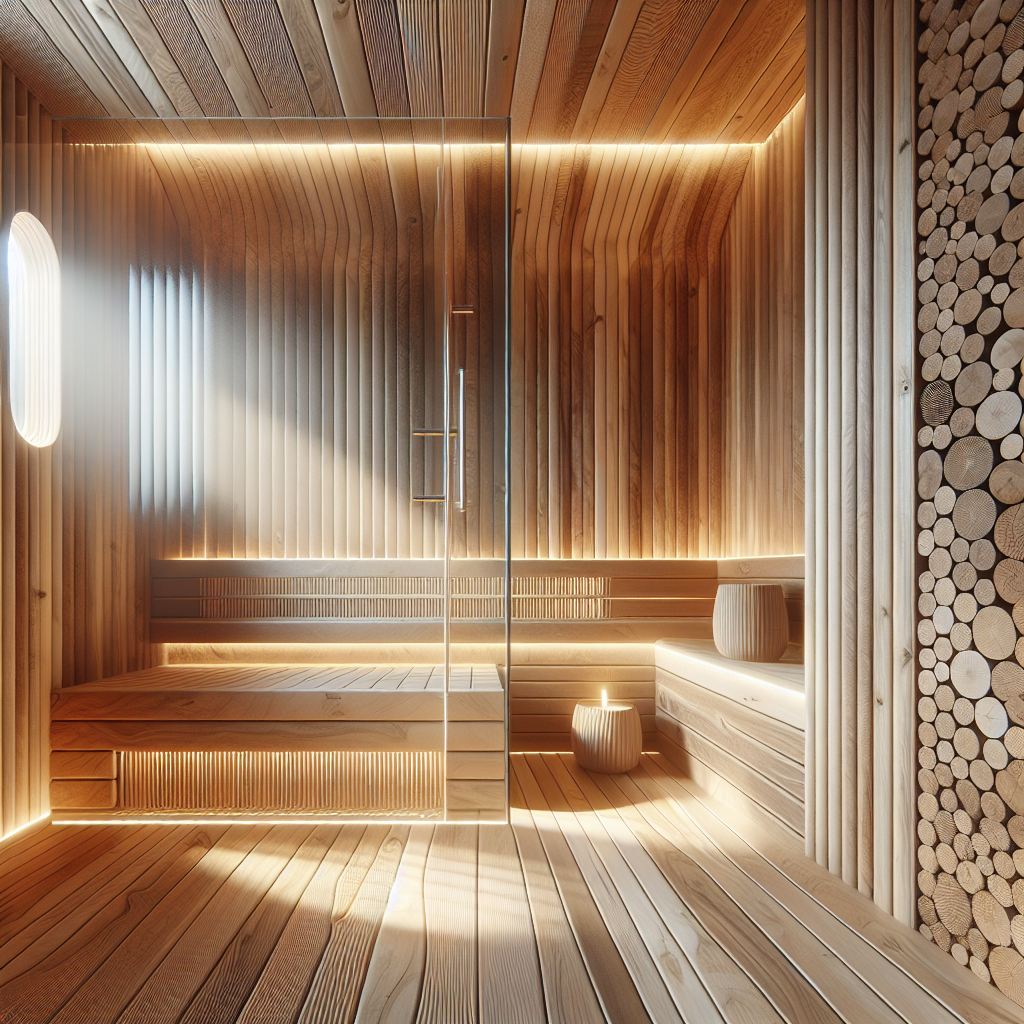Easy Guide: How to Install an Indoor Sauna at Home!
Embarking on the journey to bring the luxury of a sauna into your home begins with understanding how to install an indoor sauna. It's a project that can significantly enhance your lifestyle, providing a private retreat for relaxation and a host of health benefits. To make this process as smooth as possible, we'll guide you through the essential steps to create your very own home sauna sanctuary.
Before diving into the installation, it's important to consider the type of sauna that best suits your needs, the space where you plan to install it, and the necessary preparations to ensure a successful setup. Whether you're a DIY enthusiast or planning to hire professionals, equipping yourself with the right information is crucial. At Saunas.com, we're committed to helping you every step of the way, ensuring that you have access to the highest quality American-made saunas and the expertise needed for optimal installation.
Ready to begin the transformation of your space into a soothing oasis? Email us or call 888-503-8157 to discuss your options and find the perfect sauna solution tailored to your home. Let's embark on this journey together, creating an indulgent experience right in the comfort of your abode.
Choosing the Perfect Location for Your Indoor Sauna
Selecting the right spot for your indoor sauna is a vital step in the installation process. The location not only influences your sauna's functionality but also affects its accessibility, usage, and enjoyment. When considering how to install an indoor sauna, look for a space that offers privacy, convenience, and sufficient room for construction and operation.
Firstly, ensure that the chosen area can support the weight and size of the sauna. Basements, spare rooms, or renovated garages are often ideal locations. You should also consider proximity to a power source, as electrical saunas require a dedicated circuit. Additionally, the location should allow for proper ventilation to manage heat and humidity, which is crucial for the longevity of the sauna and the comfort of its users.
Another factor to consider is the flooring. Non-porous and water-resistant materials like tile or concrete are recommended to prevent moisture damage. If you're planning to place your sauna on a second floor or higher, consult a structural engineer to ensure that the floor can bear the load. Lastly, think about the ambiance and view. A tranquil setting with a window can elevate the sauna experience, providing a serene backdrop as you unwind.
By carefully selecting the ideal location for your indoor sauna, you'll optimize its benefits and ensure a seamless integration into your home. Remember to measure twice and plan thoroughly to avoid any complications during the installation process.
Understanding Sauna Types and Size Requirements

With a location in mind, the next step in how to install an indoor sauna is to understand the different types of saunas and their size requirements. Residential saunas come in various designs, including traditional steam saunas, infrared saunas, and dry electric saunas, each with unique space considerations.
Traditional steam saunas are known for their heated rocks and steam generation. They typically require a larger space due to the need for a heat source such as a wood-burning stove or an electric heater. Additionally, steam saunas necessitate waterproof materials and ventilation to handle the humidity.
Infrared saunas, on the other hand, use radiant heat panels and can be more compact, making them suitable for smaller spaces. They do not require extensive ventilation systems since they produce less moisture. These saunas are often available in modular designs that are easier to fit into existing rooms.
For dry electric saunas, which generate heat without producing steam, ventilation is still important, but they do not demand waterproofing to the same extent as steam saunas. When considering size, remember that standard saunas range from one-person models to larger units that can accommodate multiple users. Ensure there is enough interior space for comfortable seating and enough exterior space for proper clearance and maintenance access.
It's essential to check the manufacturer's specifications for the minimum required dimensions and adhere to them closely. Overlooking these details can lead to inadequate heating, discomfort, or even safety hazards. Accurate measurements and a clear understanding of the sauna type will guide you towards the perfect sauna that fits both your space and your lifestyle.
Essential Tools and Materials for Sauna Installation

Once you've selected the appropriate sauna for your space, gathering the essential tools and materials is the next crucial step. To ensure a smooth and successful how to install an indoor sauna process, you will need a variety of tools and materials that are commonly used in home improvement projects.
Begin by assembling basic tools such as:
- A tape measure for accurate sizing
- A level to ensure everything is perfectly horizontal or vertical
- A hammer and nails or a nail gun for assembling wooden components
- A power drill with various bits for drilling and driving screws
- A saw for cutting wood to the correct dimensions, if necessary
- A staple gun for attaching insulation and vapor barriers
Materials you'll need may include:
- High-quality, sauna-grade wood for the interior, such as cedar, hemlock, or spruce
- Insulation to keep the heat in and improve energy efficiency
- A vapor barrier to protect the structure from moisture damage
- Screws and nails for assembling the structure
- Sealant and caulk to prevent air and steam from escaping
- Light fixtures and wiring suitable for high-temperature environments
- Heater or infrared panels, depending on the type of sauna
Additionally, you may require specialized materials or tools based on the specific sauna model and installation area. It's essential to review the installation manual provided by the manufacturer carefully. This will often list all required items and may suggest additional tools for a more efficient installation. Remember to wear appropriate safety gear, such as gloves and eye protection, while working with power tools and materials.
Having the right tools and materials at the outset will facilitate a more straightforward installation process and help avoid any unnecessary interruptions or complications.
Step-by-Step Guide to Assembling Your Indoor Sauna

Assembling your indoor sauna is an exciting step towards enjoying the luxury of a personal spa experience at home. A systematic approach will make the process manageable and rewarding. Here's a step-by-step guide to help you through the assembly of your indoor sauna:
- Prepare the Area: Ensure the selected area is clean, level, and ready for installation. Verify that the dimensions match the size of your sauna kit.
- Install the Base: Assemble the base frame according to the manufacturer's instructions, making sure it is stable and level.
- Frame the Walls: Construct the walls by attaching the pre-cut panels or boards. Use a level to check for plumb lines and ensure the walls are straight.
- Set up the Door: Install the sauna door, which is often pre-hung for ease of assembly. It should open and close smoothly without any obstructions.
- Attach the Ceiling: Carefully place the ceiling panels onto the walls, securing them firmly. This may require an extra set of hands to hold the panels in place.
- Install Insulation and Vapor Barrier: Add insulation between the walls if not pre-installed, and cover with the vapor barrier to protect against moisture.
- Mount Benches and Accessories: Install the benches, backrests, and any additional accessories like towel racks or cup holders.
- Install the Heater: Set up the sauna heater or infrared panels, ensuring it is securely mounted and connected according to electrical safety standards.
- Final Touches: Apply sealant where necessary, install the lighting fixtures, and make sure all components are securely fastened.
Throughout the assembly process, refer to the detailed instructions that came with your sauna kit. Manufacturers design these kits for straightforward installation, but if you encounter any issues or have questions, it's important to consult with professionals. Taking your time to follow each step carefully will result in a well-built sauna that's ready for many relaxing sessions.
Final Touches: Sauna Safety and Maintenance Tips

After successfully assembling your indoor sauna, it's crucial to focus on safety and maintenance to ensure its longevity and optimal performance. Here are some essential tips to help you maintain a safe and pristine sauna environment:
- Check for Hazards: Inspect your sauna regularly for any potential hazards such as loose fittings, exposed wires, or splintered wood.
- Wood Treatment: Treat the wood surfaces with a sauna-specific sealant to protect against moisture and maintain the wood's appearance and integrity.
- Heater Maintenance: Clean the heater or infrared panels as recommended by the manufacturer to prevent any build-up of residues.
- Proper Ventilation: Ensure that your sauna has adequate ventilation to circulate air and remove any excess humidity.
- Hygiene: Regularly clean benches, backrests, and floorboards with a mild detergent and rinse thoroughly to prevent bacteria build-up.
- Monitor Temperature and Humidity: Use a reliable thermometer and hygrometer to keep track of the sauna's temperature and humidity levels for a safe and comfortable experience.
Adhering to these maintenance tips will not only extend the life of your sauna but also enhance the safety and enjoyment of your at-home spa sessions. If you have any concerns or need assistance with maintenance or safety, our team is here to help. Email us or call 888-503-8157 for expert advice and support. We at Saunas.com are committed to ensuring that you have a luxurious and worry-free experience with your high-quality, made in the USA sauna.
